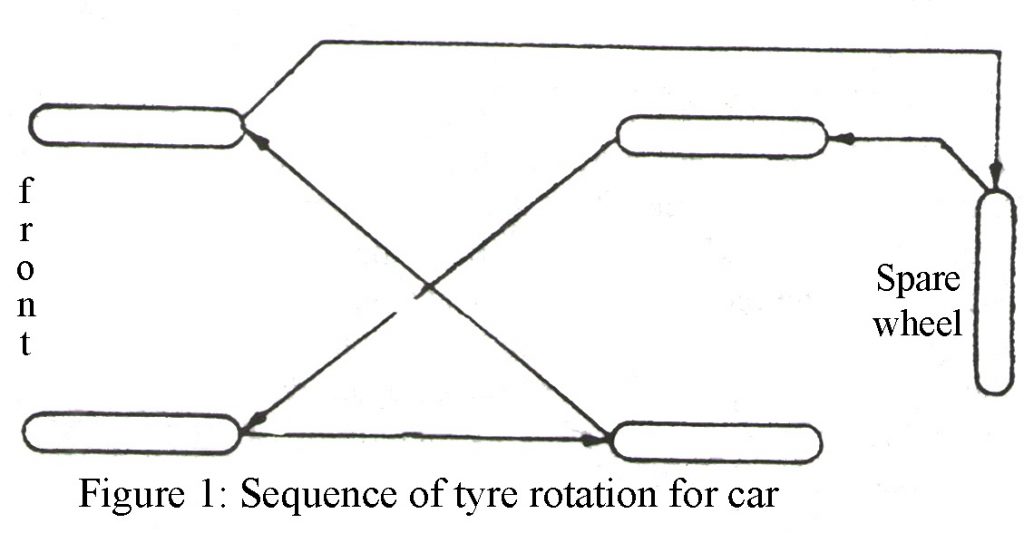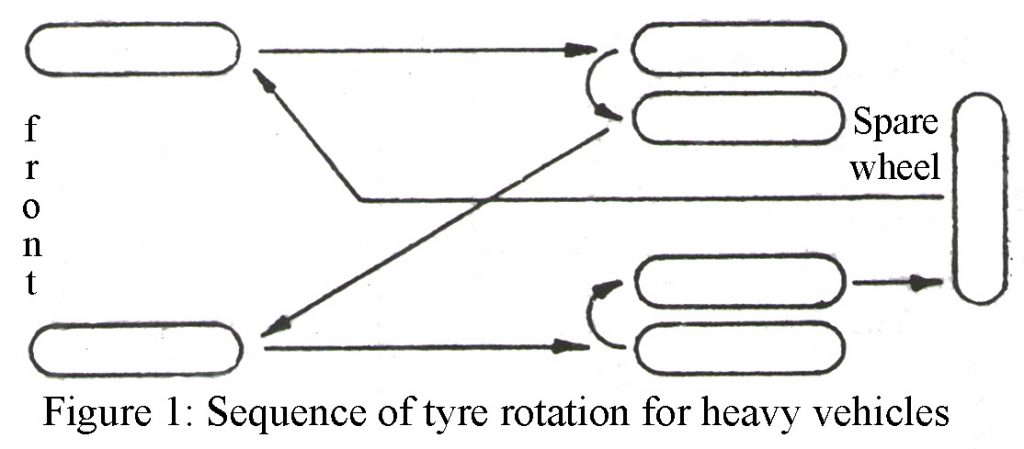Introduction | Precaution Regarding Automobile Tyres
We all know that precaution is better than cure. Here we have compiled a list of precautions regarding automobile tyres. This precaution helps one to know the possible precaution regarding tyres,
- While fitting tyres onto wheels, ensure the following:
- The wheel rim is thoroughly cleaned to remove any dirt, grease, rust, etc. and then inspected carefully for cracks.
- Check the condition of the rim valve hole and make sure that its edges are not damaged, to avoid any damage to the valve.
- The tube and the inside of the tyre are uniformly dusted with chalk.
- The tube is not carelessly pulled by the valve stem.
- The tyre beads and rim flange should be lubricated with a tyre lubricant, for easy fitting.
- The air for inflating should not be moist or contaminated.
- The correct equipment is used for mounting or removing the tyre.
- In case of a tyre being damaged mechanically (e.g. cuts, bruises etc.) do not allow it to run further unless the same is repaired within the least possible time because otherwise the moisture would get into the carcass and damage it, thus shortening the tyre life.
- Check the tyre pressure preferably daily and make sure that it is maintained at the correct value prescribed by the vehicle manufacturer.
- Do not measure the tyre pressure immediately after driving, when the tyre is hot; this will give a faulty reading.
- Do not throw away the cap on the valve; always replace it after checking air pressure. The cap serves to maintain the air pressure to some extent in case the valve is leaking. Also, it protects the valve against dirt, which, if enters inside it, will cause it to leak.
- If due for some reason any tyre on the vehicle is completely deflated, do not inflate it under the load, otherwise, the tube may not distribute itself uniformly around the tyre. In such a case jack up the wheel before inflating.
- Never let the tyres come into contact with any petroleum product e.g. petrol, diesel, Mobil oil etc. Petroleum products tend to damage the rubber.
- In order that all the tyres wear uniformly, it is recommended that tyres be rotated after fixed intervals, generally after every 8000 kilometres of operation. The advantages of tyres wearing uniformly are:
- As wear reduces a tyre’s tread depth, if all the tyres wear at the same rate, all of them would respond to the driver’s input equally, maintaining the cornering and handling characteristics.
- You can replace all the tyres together so that the original handling is maintained. Replacing only the worn-out tyres, even in pairs would result in compromise of tyre performance. Besides, replacing all the tyres together also gives you an option to install a better performing set of tyres, if available. Figs. 1 and 2 show such tyre rotation sequences for cars and heavy vehicles.
- Wheel balancing and alignment must be got done regularly as prescribed by the vehicle manufacturer or after about every 10,000 km. At this time, also make sure to replace the defective/lost protective dust caps.
- Care should be exercised while loading the vehicle so that all the tyres are equally loaded.
- Overloading of the vehicle should be avoided, because apart from causing damage to the tyre carcass, running with overloaded tyres increases fuel consumption also on account of increased rolling resistance.
- Wherever dual tyres are employed, as is the case with heavy vehicles, there must be proper Fig. 2. The sequence of tyre rotation for heavy vehicles matching of the dual tyres, otherwise one of the tyres will be overloaded and will eventually wear more. Theoretically, the two tyres must be of exactly the same diameters. A small tolerance of about 10 mm difference of diameters is however allowed, which is sometimes purposely kept to account for the camber of the road. In such a case the wheel with lesser diameter is placed on the inside; or alternatively, if the two wheels are of equal diameter, the inner one is inflated slightly less than the outside one.
- Caution has to be exercised if original cross-ply tyres on a car are to be replaced by radial-ply tyres. As already seen, cross-ply tyres have a tendency to distort at higher speeds so that the contact patch moves back, past the centre line of the tyre, resulting in an increase of castor in the positive direction. This effect would not be present in the case of radial-ply tyres. As such the castor specification will have to be changed suitably making it more positive in case cross-ply tyres are replaced by radial-ply tyres.
- In case radial-ply tyres are used, these must be fitted on all the wheels. However, cross-ply tyres on the front and radial ply on the rear wheels may be used. Radial-ply at the front and cross-ply at the rear should never be used. Steel braced radials have slightly higher cornering power than textile braced radials. As such in case these have to be mixed, textile braced radials may be used at the front with the steel radials at the rear axle. Further, the two types should not be mixed on the same axle. Non-observance of these will lead to serious deterioration of the cornering characteristics and may be quite dangerous. The best alternative is always to have all tyres including the spare one not only of the same type but also of the same make and tread pattern, to ensure complete uniformity.
- You may never use the spare wheel, but always make sure that the same is properly inflated and in good condition.
- Apart from the precautions mentioned above, it is very necessary that sufficient attention is given.
Check out other automobile troubleshooting tutorials posted on bestengineeringprojects.com
- Gearbox Troubleshooting
- Automobile Clutch Troubleshooting
- Automobile Suspension System Troubleshooting
- Wheel and Tyre Trouble Shooting
- Automobile Lighting System Troubleshooting
- Brake Troubleshooting
- Automobile Steering Troubleshooting

